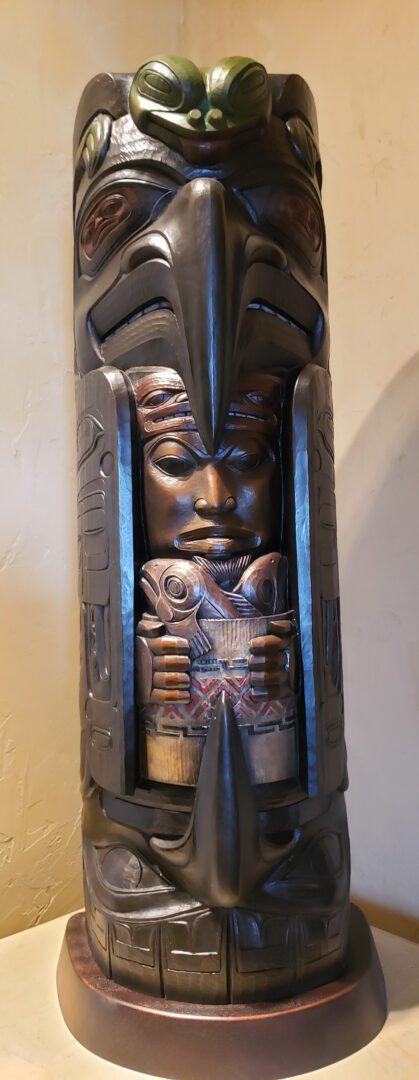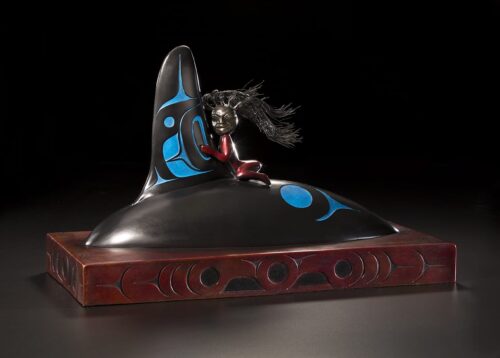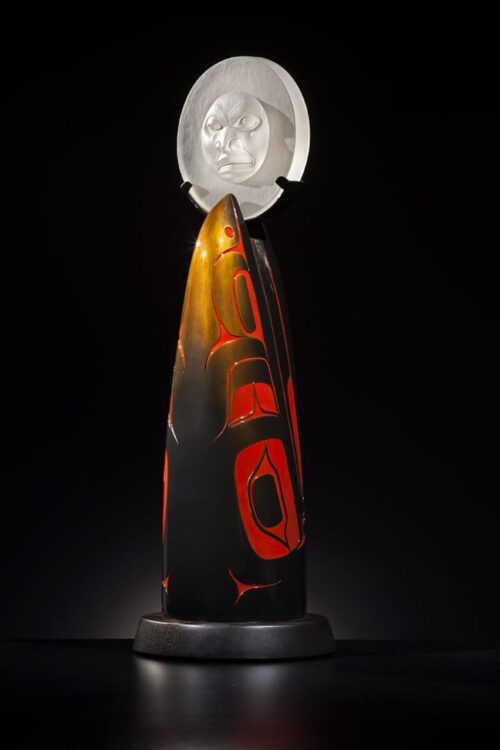Singletary, Preston
 When I began working with glass in 1982, I had no idea that I’d be so connected to the material in the way that I am. It was only when I began to experiment with using designs from my Tlingit cultural heritage that my work began to take on a new purpose and direction.
When I began working with glass in 1982, I had no idea that I’d be so connected to the material in the way that I am. It was only when I began to experiment with using designs from my Tlingit cultural heritage that my work began to take on a new purpose and direction.
Over time, my skill with the material of glass and traditional form line design has strengthened and evolved, allowing me to explore more fully my own relationship to both my culture and chosen medium. This evolution, and subsequent commercial success, has positioned me as an influence on contemporary indigenous art. Through teaching and collaborating in glass with other Native American, Maori, Hawaiian, and Australian Aboriginal artists, I’ve come to see that glass brings another dimension to indigenous art. The artistic perspective of indigenous people reflects a unique and vital visual language that has connections to the ancient codes and symbols of the land, and this interaction has informed and inspired my own work.
My work with glass transforms the notion that Native artists are only best when traditional materials are used. It has helped advocate on the behalf of all indigenous people — affirming that we are still here — that that we are declaring who we are through our art in connection to our culture.
My work continues to evolve and connect my personal cultural perspective to current modern art movements, and I have received much attention for striving to keep the work fresh and relevant. I have been honored that my success has inspired other artists from underrepresented indigenous cultures to use glass and other non-traditional materials in their work, and hope that I can continue to encourage more innovation in this area as my career progresses.
Photo credit: Russell Johnson












